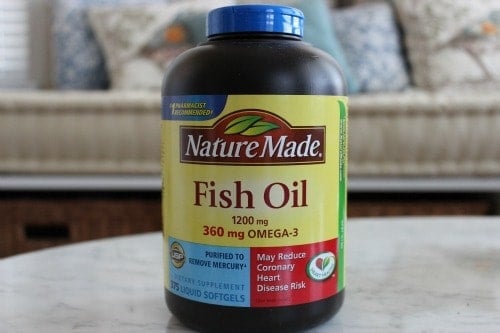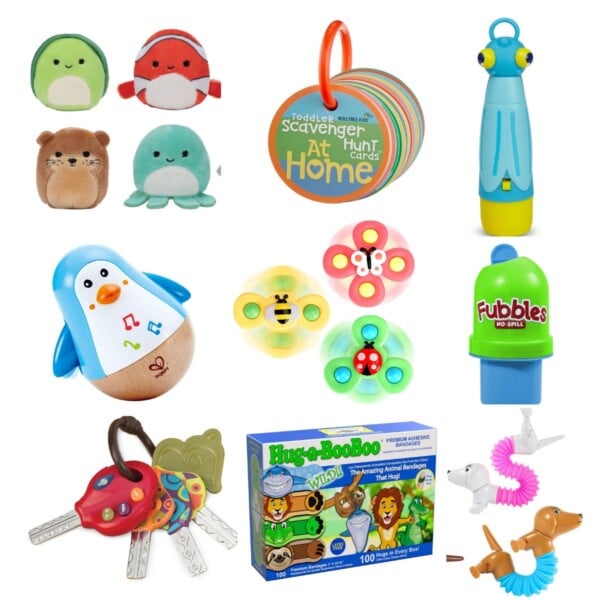This post may contain affiliate links. Please see our disclosure policy for more details.
Lifespan Nutrition, one of the prerequisite courses for the Master’s Program, has to be one of my favorite classes I’ve taken so far. There was not a single lecture I wasn’t excited about (nerd alert). And certainly, having one of my favorite professors, Dr. Crixell (whom I absolutely love and admire), as the instructor elevated the class to a whole new level. Her area of interest is in community-based nutrition, specifically in childhood obesity, and her passion towards her work is truly infectious and awe-inspiring.
This course is what really opened my eyes to the childhood obesity epidemic and spurred my ever-growing interest in the field of childhood nutrition. As part of the course, I, along with a colleague of mine, wrote a 20-page paper on food preferences in infants and toddlers and whether or not they carry over and continue into later years. It was one of those papers that you read over and over again with extreme pride and disbelief that you actually wrote it. (Side note: For those of you guys who’re in a nutrition program, start working on your portfolio now! It’s easy to forget later on all the wonderful work you’ve accomplished over time.) I hope to dedicate a post to the contents of the paper and what me and my colleague found from looking through literally hundreds of research articles on Pubmed. I think you’ll find it very fascinating! Or so I hope..
The course addressed in-depth the different nutritional requirements throughout all stages of life from infancy to older adulthood, including pre-pregnancy and pregnancy states.
I have, to my dismay, forgotten a lot of the material I learned, so I thought it’d be nice to use my cozy lil’ space here on the web to post some important knowledge I obtained as a reminder for myself. In doing so, I hope that you’ll also find the information helpful and interesting. As I continue to expand my knowledge in this dynamic field, I plan on dedicating more of my posts to nutrition-related topics.
For today, I want to talk about Omega-3 fatty acids. I’m sure you’re aware of the ever-growing popularity with fish oil supplementation. I try to stay away from supplements and make it a top priority of mine to get essential nutrients from whole foods. However, fish oil is one supplement that I do take everyday along with folic acid.
Fish oil contains both EPA and DHA which have been associated with several health benefits: decrease inflammation, improve cardiovascular health, reduce depression, improve brain function and pregnancy health. As I hope to be a mother soon, the latter was what really got me to start taking a fish oil supplement.

Studies indicate that fish oil intake during pregnancy has many benefits. It lowers the risk for preterm labor and preeclampsia and increases the baby’s intelligence. Studies have shown that infants born to mothers who consume enough DHA/EPA demonstrate greater visual acuity and cognitive skills and hand/eye coordination.
Now, I bet that sparked your interest, no? It certainly did mine! I’m not going to lie – I dream of having my very own protege ;). However, before going crazy with the omega-3s, remember: more is not better! It can lead to serious problems.
Omega-3s have blood-thining properties, and therefore, large doses can lead to bleeding. Also, supplements have impurities in them such as vitamins A, C, and E, and an excess of these macronutrients has serious adverse consequences. And of course, the biggest concern is mercury, especially for pregnant women.
According to the 2010 Dietary Guidelines, it’s recommended that people should consume about 250mg/day. For pregnant women, intake of up to 500mg/day is considered safe. However, less than 1/3 of the recommended amount is consumed by women because of the fear of mercury.
Here are a few guidelines regarding proper omega-3 consumption:
- Consume at least 8 oz to 12 oz of fish per week
- Avoid tilefish, shark, king mackerel, swordfish, tuna steaks – basically any large, predator fish
- Can eat all types of tuna. However, limit white (albacore) tuna to 6oz/week.
Some links that may be helpful to you
- https://www.ewg.org/safefishlist (I suggest that you print this out and take it with you when you go to the grocery store.)
- www.epa.gov/waterscience/fish/states.htm
- https://www.ewg.org/tunacalculator
I’m taking a fish oil supplement right now simply because I’m not getting enough of the nutrient from my diet. However, I’m making an effort to incorporate more seafood into my meals. These 3 links definitely help me in making the right decisions when it comes to choosing which ones to consume.
One of my (and the rest of the world’s) favorite fish is salmon. So I thought it’d be appropriate to include a salmon recipe featured in a cook book that I purchased in Korea.
Although my favorite ways to enjoy salmon are either raw (sashimi style) or simply grilled and seasoned with s&p, there are days when I want a little more oomph. That’s when this homemade teriyaki marinade comes in to play.
Although the original recipe calls for brown sugar, I decided to substitute it with maple syrup. This marinade is rich and delightfully complex, as the sweetness of maple syrup and the saltiness of soy sauce come together to sing a harmonious tune.
Salmon Teriyaki
Ingredients:
- 1 garlic clove, minced
- 1 Tsp grated fresh root ginger
- 1 Tbs low-sodium soy sauce
- 1 Tbs rice vinegar
- 14 oz salmon fillet, portion into 2 or 4 fillets
- 1 Tbs mirin
- 3 Tsp maple syrup (or honey)
- 1 Tbs low-sodium soy sauce
- 3 Tbs olive oil
- Green onions, for garnish
Directions:
- Combine garlic, ginger, soy sauce, and rice vinegar. Mix well. Coat salmon fillets with marinade in a shallow dish or a ziploc bag. Let fillets marinate for at least an hour.
- Combine mirin, maple syrup, soy sauce in a bowl and set aside.
- In a pan on med-high heat, add oil and add fillets. Cook until lightly browned on both sides.
- Reduce heat and pour marinade as well as mirin mixture (step #2) over fillets. Cook until fillets are evenly coated and juices form a sticky glaze.
- Garnish. Serve with rice, noodles, vegetables…
I served mine with this tofu and vegetable quinoa and rice.

Question:
– Do you take a fish oil supplement?
– How often do you eat fish? What’s your favorite?
















I really enjoyed this post, Min! The nutrition nerd in me is so excited that you’ll be sharing more of the information you’re learning about in your classes with us. That’s a goal of mine as well; I think a lot of the general nutrition knowledge circulated by the media is either incorrect or sensationalized, so it’s our job to tell it like it is, right? 😉
One of my favorite classes during my first year of grad school was Lifecycle nutrition as well. It’s so fascinating how our bodies require different nutrients to grow and function properly during different stages in our lives. While I was taking that class, I also began supplementing with fish oil, however I’m ashamed to say that I’ve become a bit lax in this area. :-/ Now I only take a pill when I remember, which is probably only once/week! I do eat a lot of fish though (although since school has started it’s been much less frequently), so I think my levels are probably okay. When/if I ever decide to have a baby, I’ll definitely be on top of my vitamin intake! I know I’m going to be one of those moms who is paranoid about every little thing! Hehe.
The salmon teriyaki looks DELICIOUS!! I usually prepare mine simply too, but occasionally I like a bit more flavor. I just bookmarked this recipe (love that it uses honey!). Besides salmon, my favorite fish is tuna (lightly seared or raw), however I try not to eat it more than once/week. I also love scallops!
Hope you had a wonderful weekend! <3
I always love reading your comments, Sara! Thank you! And yes, you’re absolutely right! One of the things that our Professors always emphasize is that “WE” are the experts! We know about food! We have the educational background and knowledge, and therefore it’s so important that we make our voices be heard! I can’t wait to read all about what you’re learning!
I hear ya! I’m going to be such a paranoid mother as well! I already am! I can’t even take tea wo thinking…”oh I just drank tea so I shouldn’t kale, spinach, etc..right after.” Must encourage absorption of the nutrients, etc…Yes…ignorance is bliss sometimes..
Oh, I love my sushi…and yes! Scallops! Hope you have a wonderful week, Sara!
You recipe looks tasty! I love salmon and try to eat at least once a week. I take a fish oil pill most days. It’s pretty much the only supplement I take.
And I know exactly how you feel about your class where you were excited for every lecture!
I had some of those when I was in school and they are the best! I always liked child nutrition and public health the most. Oh and I’d totally love to read your paper! I’m so interested in child to adult eating patterns
Thanks! It sure does make a HUGE difference when you’re studying for something that you’re extremely passionate about, right? I started off wanting to get into Food Science, but now I’m heading more towards wanting to work with children. Oh I can’t wait to just get out there!